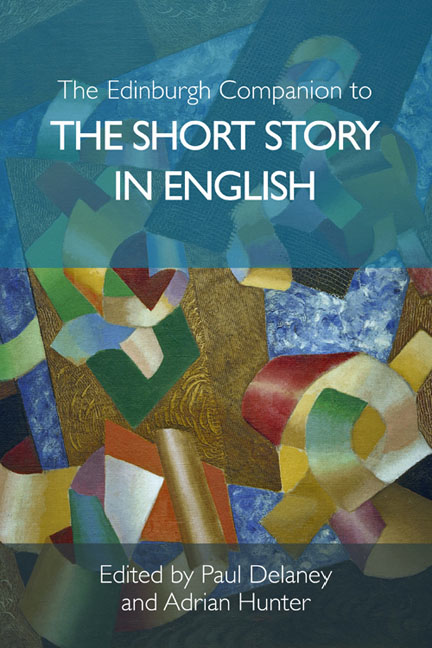Book contents
- Frontmatter
- Contents
- Acknowledgements
- Notes on Contributors
- Introduction
- Part I Historicising the Short Story
- Part II Publishing the Short Story
- 5 The Short Story and the ‘Little Magazine’
- 6 Collections, Cycles and Sequences
- 7 The Short Story Anthology
- 8 The Short Story and Digital Media
- Part III Forms of the Short Story
- Part IV Placing the Short Story
- Part V Identity and the Short Story
- Index of Short Story Titles
- General Index
8 - The Short Story and Digital Media
from Part II - Publishing the Short Story
Published online by Cambridge University Press: 18 December 2019
- Frontmatter
- Contents
- Acknowledgements
- Notes on Contributors
- Introduction
- Part I Historicising the Short Story
- Part II Publishing the Short Story
- 5 The Short Story and the ‘Little Magazine’
- 6 Collections, Cycles and Sequences
- 7 The Short Story Anthology
- 8 The Short Story and Digital Media
- Part III Forms of the Short Story
- Part IV Placing the Short Story
- Part V Identity and the Short Story
- Index of Short Story Titles
- General Index
Summary
E-READING, AS JOHN THOMPSON has pointed out, is only the most public and visible aspect of a digital revolution that has transformed nearly every aspect of publishing. Evolving modes of distribution change what it means to write a short story for publication. If ‘publishing’ means making a short story available, the Internet makes this technically trivial. If ‘publishing’ is to make that story ‘real’, to make it legitimate and potentially influential, to earn for its author rewards – money, prestige, audience, credibility, and so on – then electronic publishing presents new opportunities without resolving old conflicts between pursuit of those rewards, most notably between wide readership and high status.
The digital age has not (at least not yet) ushered in a dramatic resurgence for the popularity of the short story form. The on-screen short story contends with an electronic publishing arena only beginning to pull away from print-based norms. It does have one advantage over the short story in print: it can appear in company, but does not have to. After a century and more of the dominance of the periodical and the bound collection (single-author and anthology), with only the rarest examples of stand-alone print publication, the digital short story can go out into the world on its own, unfettered as a pamphlet or ballad sheet, or allied to a greater range of non-textual material. For a short story to have its own distinct paratext is potentially revolutionary. But such an unfettered short story is forced, for the moment, to make its way in digital spaces occupied primarily by, and in many cases designed for, booklength works of prose. The accommodations required to reach readers – in pricing, in distribution and in paratextual packaging – mean that the solo story is often allied to larger series, books and brands. This lingering on the sidelines, however, has not proved a calamity: innovation is possible, as the component of the short story's identity most relevant to its digital future appears to be not brevity or non-commercial distribution or modernist values, but portability.
This chapter does not aspire to offer a comprehensive survey of a large and rapidly changing field, or even a list of key players.
- Type
- Chapter
- Information
- The Edinburgh Companion to the Short Story in English , pp. 125 - 144Publisher: Edinburgh University PressPrint publication year: 2018



